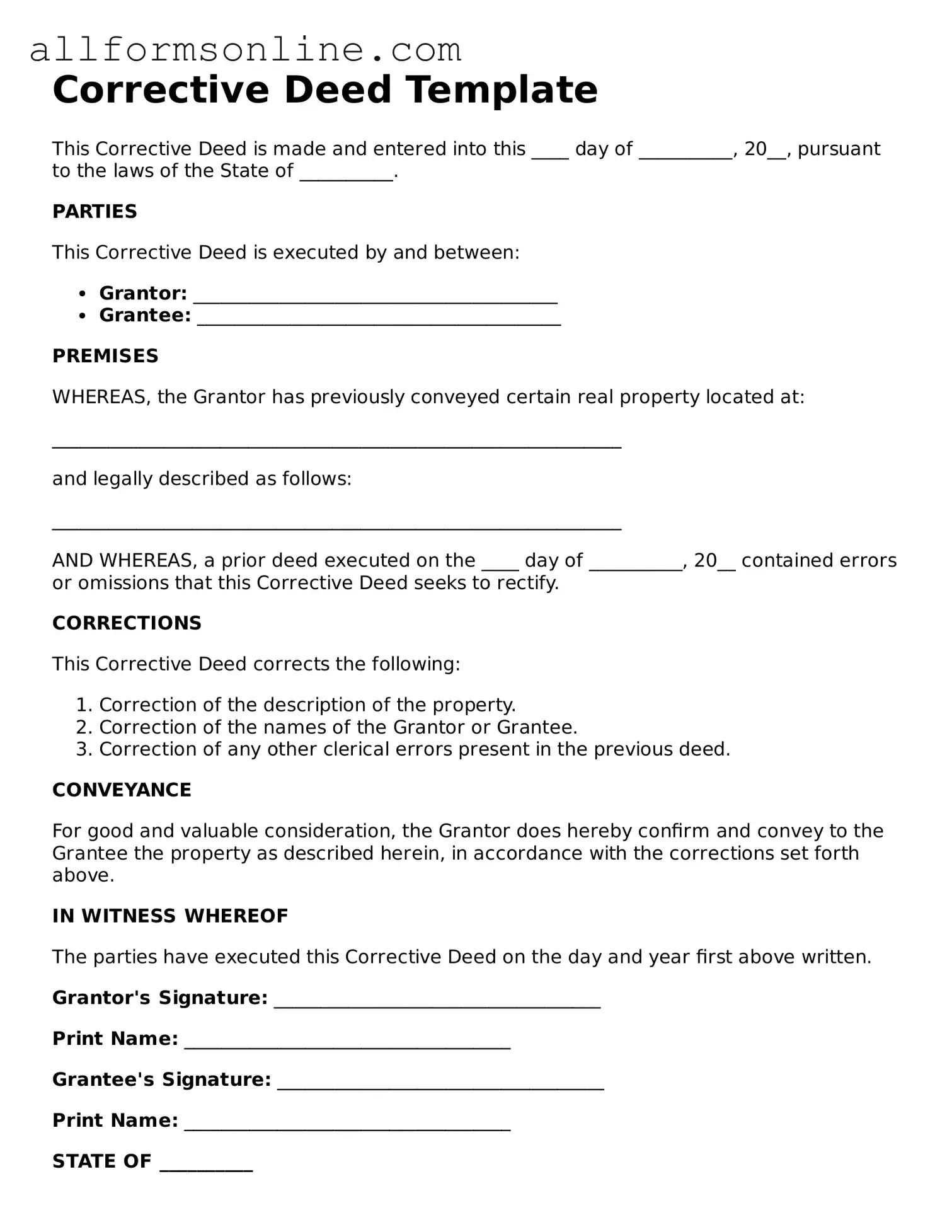A Corrective Deed is a legal document used to amend or correct errors in a previously executed deed. These errors can include misspellings of names, incorrect property descriptions, or other inaccuracies that could affect the validity of the original deed. By filing a Corrective Deed, you ensure that the public record accurately reflects the intended ownership and details of the property.
You should consider using a Corrective Deed whenever you discover an error in a deed that has already been recorded. Common scenarios include typographical errors, incorrect legal descriptions, or changes in the names of the parties involved. Addressing these issues promptly helps avoid confusion or disputes in the future.
What information is needed to complete a Corrective Deed?
To complete a Corrective Deed, you will need specific information, including the original deed's date, the names of the parties involved, and the legal description of the property. You must also clearly outline the corrections being made. Providing accurate information is crucial for the document to be effective.
Is there a specific format for a Corrective Deed?
While there is no universally mandated format, a Corrective Deed should include certain elements to be valid. These typically include a title indicating it is a Corrective Deed, a reference to the original deed, a description of the corrections, and the signatures of the involved parties. It's important to check local requirements, as they may vary by jurisdiction.
Do I need to notarize a Corrective Deed?
Yes, a Corrective Deed generally requires notarization. This step helps verify the identities of the parties signing the document and ensures that the deed is executed properly. Notarization adds an extra layer of authenticity, which is important for the validity of the document when it is recorded.
How do I record a Corrective Deed?
To record a Corrective Deed, you must submit it to the appropriate local government office, usually the county recorder or clerk’s office. You may need to pay a recording fee, and it's advisable to keep a copy of the recorded deed for your records. Once recorded, the Corrective Deed becomes part of the public record.
Will a Corrective Deed affect my property title?
A Corrective Deed should not negatively affect your property title if executed correctly. Instead, it clarifies and corrects any discrepancies in the original deed. This helps protect your ownership rights and ensures that future transactions involving the property are based on accurate information.
Can a Corrective Deed be contested?
While it is possible for a Corrective Deed to be contested, this typically happens if there are disputes regarding the validity of the corrections or the intent of the parties involved. To minimize the risk of contestation, ensure that all parties agree on the corrections and that the Corrective Deed is executed properly.
What should I do if I have more questions about Corrective Deeds?
If you have additional questions about Corrective Deeds or your specific situation, consider consulting a legal professional. They can provide tailored advice based on your circumstances and help ensure that all necessary steps are taken to protect your property rights.
